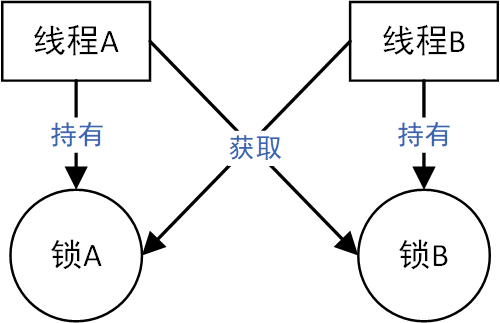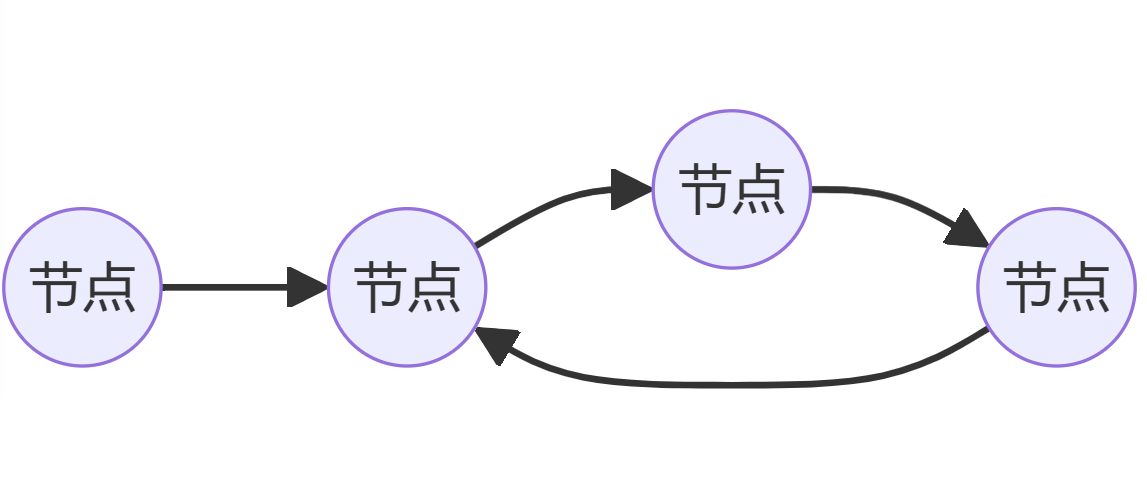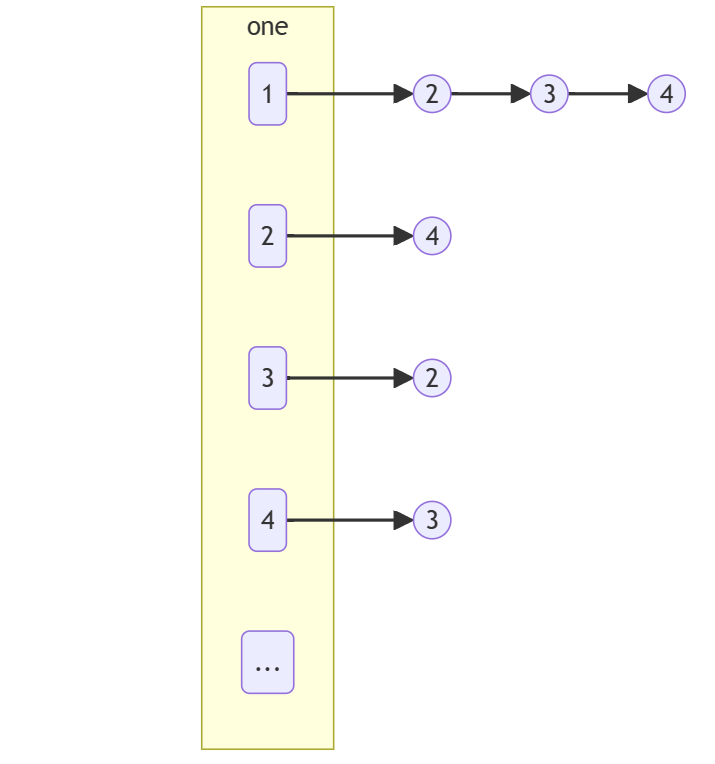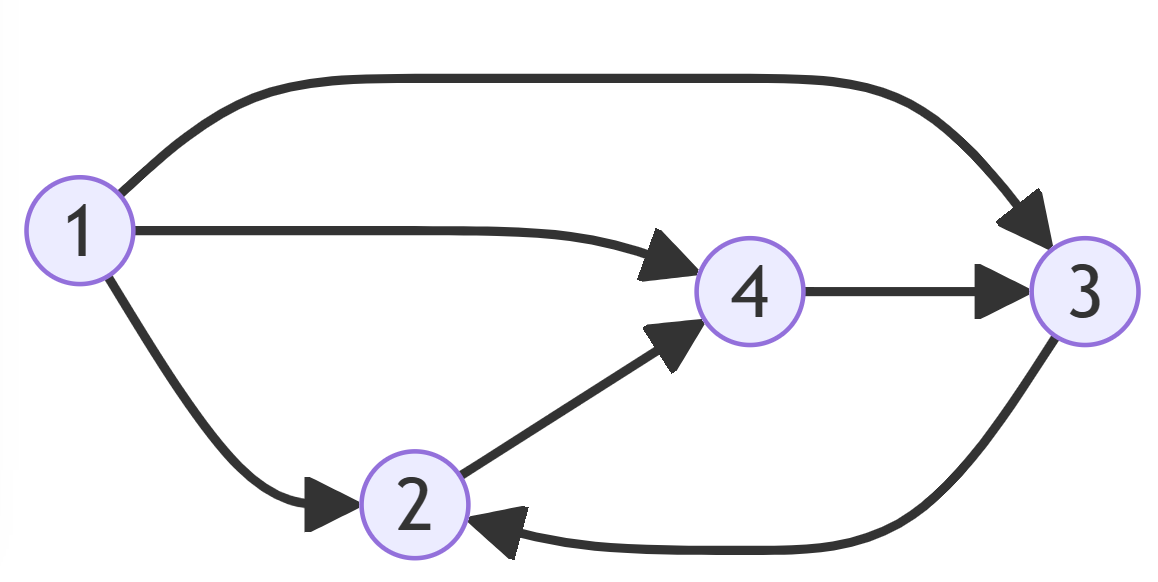本文分享自华为云社区《掌握死锁检测:策略和最佳实践》,作者: Lion Long。
一、背景:死锁产生原因
死锁,是指多个线程或者进程在运行过程中因争夺资源而造成的一种僵局,当进程或者线程处于这种僵持状态,若无外力作用,它们将无法再向前推进。如下图所示,线程 A 想获取线程 B 的锁,线程 B 想获取线程 C 的锁,线程 C 想获取线程 D 的锁,线程 D 想获取线程 A 的锁,从而构建了一个资源获取环。
如果有两个及以上的 CPU 占用率达到 100%时,极可能是程序进入死锁状态。
死锁的存在是因为有资源获取环的存在,所以只要能检测出资源获取环,就等同于检测出死锁的存在。
1.1、构建一个死锁
#include <stdio.h>#include <stdlib.h>#include <unistd.h>#include <pthread.h>pthread_mutex_t mutex1 = PTHREAD_MUTEX_INITIALIZER;pthread_mutex_t mutex2 = PTHREAD_MUTEX_INITIALIZER;pthread_mutex_t mutex3 = PTHREAD_MUTEX_INITIALIZER;pthread_mutex_t mutex4 = PTHREAD_MUTEX_INITIALIZER;
void *thread_funcA(void *arg){ pthread_mutex_lock(&mutex1); sleep(1); pthread_mutex_lock(&mutex2);
printf("funcA --> \n");
pthread_mutex_unlock(&mutex2); pthread_mutex_unlock(&mutex1);}
void *thread_funcB(void *arg){ pthread_mutex_lock(&mutex2); sleep(1); pthread_mutex_lock(&mutex3);
printf("funcB --> \n");
pthread_mutex_unlock(&mutex3); pthread_mutex_unlock(&mutex2);}
void *thread_funcC(void *arg){ pthread_mutex_lock(&mutex3); sleep(1); pthread_mutex_lock(&mutex4);
printf("funcC --> \n");
pthread_mutex_unlock(&mutex4); pthread_mutex_unlock(&mutex3);}
void *thread_funcD(void *arg){ pthread_mutex_lock(&mutex4); sleep(1); pthread_mutex_lock(&mutex1);
printf("funcD --> \n");
pthread_mutex_unlock(&mutex1); pthread_mutex_unlock(&mutex4);}int main(){ pthread_t tid[4] = { 0 }; pthread_create(&tid[0], NULL, thread_funcA, NULL); pthread_create(&tid[1], NULL, thread_funcB, NULL); pthread_create(&tid[2], NULL, thread_funcC, NULL); pthread_create(&tid[3], NULL, thread_funcD, NULL);
pthread_join(tid[0], NULL); pthread_join(tid[1], NULL); pthread_join(tid[2], NULL); pthread_join(tid[3], NULL);
return 0;}
复制代码
二、使用 hook 检测死锁
hook 使用场景:
(1)实现自己的协议栈,通过 hook posix api。
2.1、dlsym()函数
获取共享对象或可执行文件中符号的地址。
函数原型:
#include <dlfcn.h>
void *dlsym(void *handle, const char *symbol);
#define _GNU_SOURCE#include <dlfcn.h>
void *dlvsym(void *handle, char *symbol, char *version);
// Link with -ldl.
复制代码
描述:
函数 dlsym()接受 dlopen()返回的动态加载共享对象的“句柄”以及以空结尾的符号名,并返回该符号加载到内存中的地址。如果在指定对象或加载对象时 dlopen()自动加载的任何共享对象中找不到该符号,dlsym()将返回 NULL。(dlsym()执行的搜索是通过这些共享对象的依赖关系树进行的广度优先搜索。)
由于符号的值实际上可能是 NULL(因此,dlsym()的 NULL 返回值不必指示错误),因此测试错误的正确方法是调用 dlerror()以清除任何旧的错误条件,然后调用 dlsym。
handle 中可以指定两个特殊的伪句柄:
函数 dlvsym()的作用与 dlsym()相同,但使用版本字符串作为附加参数。
返回值:
成功时,这些函数返回与符号关联的地址。
失败时,返回 NULL;可以使用 dlerror()诊断错误的原因。
2.2、pthread_self()函数
获取调用线程的 ID。
函数原型:
#include <pthread.h>
pthread_t pthread_self(void);
// Compile and link with -pthread.
复制代码
说明:
函数的作用是返回调用线程的 ID。这与创建此线程的 pthread_create()调用中*thread 中返回的值相同。
返回值:
此函数始终成功,返回调用线程的 ID。
2.3、实现步骤
(1)构建函数指针
(2)定义与目标函数一样的类型
typedef int(*pthread_mutex_lock_t)(pthread_mutex_t *mutex);typedef int(*pthread_mutex_unlock_t)(pthread_mutex_t *mutex);
pthread_mutex_lock_t pthread_mutex_lock_f;pthread_mutex_unlock_t pthread_mutex_unlock_f;(3)具体函数实现,函数名与目标函数名一致
int pthread_mutex_lock(pthread_mutex_t *mutex){ pthread_t selfid = pthread_self();
printf("pthread_mutex_lock: %ld, %p\n", selfid, mutex); // ... return 0;}
int pthread_mutex_unlock(pthread_mutex_t *mutex){ pthread_t selfid = pthread_self();
printf("pthread_mutex_unlock: %ld, %p\n", selfid, mutex); // ... return 0;}(4)调用dlsym()函数,即钩子。
int init_hook(){ pthread_mutex_lock_f = dlsym(RTLD_NEXT, "pthread_mutex_lock"); pthread_mutex_unlock_f = dlsym(RTLD_NEXT, "pthread_mutex_unlock"); // ... return 0;}
复制代码
2.4、示例代码
#define _GNU_SOURCE#include <dlfcn.h>#include <stdio.h>#include <stdlib.h>#include <unistd.h>#include <pthread.h>typedef int(*pthread_mutex_lock_t)(pthread_mutex_t *mutex);typedef int(*pthread_mutex_unlock_t)(pthread_mutex_t *mutex);
pthread_mutex_lock_t pthread_mutex_lock_f;pthread_mutex_unlock_t pthread_mutex_unlock_f;
int pthread_mutex_lock(pthread_mutex_t *mutex){ pthread_t selfid = pthread_self();
pthread_mutex_lock_f(mutex); printf("pthread_mutex_lock: %ld, %p\n", selfid, mutex); return 0;}
int pthread_mutex_unlock(pthread_mutex_t *mutex){ pthread_t selfid = pthread_self();
pthread_mutex_unlock_f(mutex); printf("pthread_mutex_unlock: %ld, %p\n", selfid, mutex);
return 0;}
int init_hook(){ pthread_mutex_lock_f = dlsym(RTLD_NEXT, "pthread_mutex_lock"); pthread_mutex_unlock_f = dlsym(RTLD_NEXT, "pthread_mutex_unlock"); return 0;}
#if 1 // debug
pthread_mutex_t mutex1 = PTHREAD_MUTEX_INITIALIZER;pthread_mutex_t mutex2 = PTHREAD_MUTEX_INITIALIZER;pthread_mutex_t mutex3 = PTHREAD_MUTEX_INITIALIZER;pthread_mutex_t mutex4 = PTHREAD_MUTEX_INITIALIZER;
void *thread_funcA(void *arg){ pthread_mutex_lock(&mutex1); sleep(1); pthread_mutex_lock(&mutex2);
printf("funcA --> \n");
pthread_mutex_unlock(&mutex2); pthread_mutex_unlock(&mutex1);}
void *thread_funcB(void *arg){ pthread_mutex_lock(&mutex2); sleep(1); pthread_mutex_lock(&mutex3);
printf("funcB --> \n");
pthread_mutex_unlock(&mutex3); pthread_mutex_unlock(&mutex2);}
void *thread_funcC(void *arg){ pthread_mutex_lock(&mutex3); sleep(1); pthread_mutex_lock(&mutex4);
printf("funcC --> \n");
pthread_mutex_unlock(&mutex4); pthread_mutex_unlock(&mutex3);}
void *thread_funcD(void *arg){ pthread_mutex_lock(&mutex4); sleep(1); pthread_mutex_lock(&mutex1);
printf("funcD --> \n");
pthread_mutex_unlock(&mutex1); pthread_mutex_unlock(&mutex4);}int main(){
init_hook();
pthread_t tid[4] = { 0 }; pthread_create(&tid[0], NULL, thread_funcA, NULL); pthread_create(&tid[1], NULL, thread_funcB, NULL); pthread_create(&tid[2], NULL, thread_funcC, NULL); pthread_create(&tid[3], NULL, thread_funcD, NULL);
pthread_join(tid[0], NULL); pthread_join(tid[1], NULL); pthread_join(tid[2], NULL); pthread_join(tid[3], NULL);
return 0;}
#endif
复制代码
缺点:这种方式在少量锁情况下还可以分析,在大量锁使用的情况,分析过程极为困难。
三、使用图算法检测死锁
死锁检测可以利用图算法,检测有向图是否有环。
3.1、图的构建
(1)矩阵
(2)邻接表
数据结构原理示意图:
“图”连接:
3.2、图的使用
先新增节点再新增边。
(1)每创建一个线程,新增一个节点;注意,不是线程创建的时候就要加节点(有些线程不会用到锁),而是线程调用锁(以互斥锁为例,pthread_mutex_lock() )的时候才添加节点。
(2)线程加锁(以互斥锁为例,pthread_mutex_lock() )的时候,并且检测到锁已经占用,则新增一条边。
(3)移除边,调用锁(以互斥锁为例,pthread_mutex_lock() )前,如果此时锁没有被占用,并且该边存在,则移除边。
(4)移除节点是在解锁之后。
三个原语操作:
(1)加锁之前的操作,lock_before();
(2)加锁之后的操作,lock_after();
(3)解锁之后的操作,unlock_after();
3.3、示例代码
代码比较长,为了避免篇幅较长,不利于阅读,这里没有贴上。如果需要,可以联系博主,或者关注微信公众号 《Lion 莱恩呀》 获取。
总结
死锁的产生是因为多线程之间存在交叉申请锁的情况,因争夺资源而造成的一种僵局。hook 使用:
(1)定义与目标函数一样的类型;
(2)具体函数实现,函数名与目标函数名一致;
(3)调用 dlsym()函数,初始化 hook。
死锁检测可以使用图算法,通过检测有向图是否有环判断是否有死锁。
点击关注,第一时间了解华为云新鲜技术~



















评论